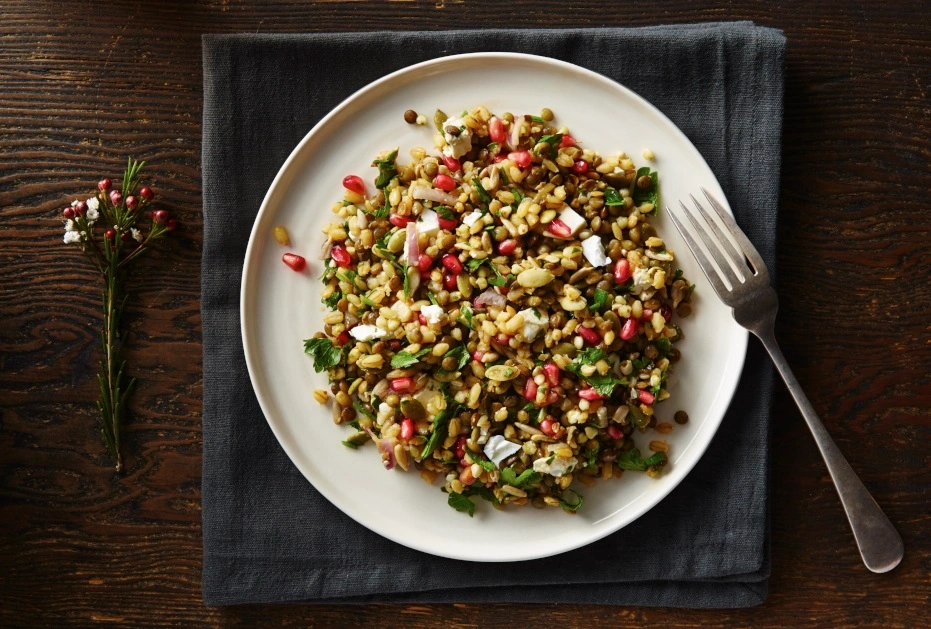In the world of nutrition and food trends, ancient grains have made an impressive comeback. Once overshadowed by modern, processed grains, these nutritional powerhouses are now celebrated for their health benefits and unique flavors. With the growing awareness of healthy eating, ancient grains are making their way into our daily diets, especially in the form of cereals. If you’re a health enthusiast or foodie, this post is for you. Let’s explore why ancient grains are the new stars of the cereal aisle and how they can revolutionize your breakfast routine.
What Are Ancient grain in a healthy cereal nyt?
Ancient grain in a healthy cereal nyt refer to a category of grains and pseudocereals that have remained largely unchanged over the millennia. Unlike modern wheat or corn, these grains have not been selectively bred or modified significantly. Examples include quinoa, amaranth, spelt, farro, and millet. These grains are not only rich in nutrients but also boast unique textures and flavors that can elevate any dish.
Nutritional Benefits
Ancient grain in a healthy cereal nyt are packed with essential nutrients such as fiber, protein, vitamins, and minerals. For instance, quinoa is a complete protein, meaning it contains all nine essential amino acids. These grains are also rich in antioxidants, which can help combat oxidative stress and inflammation in the body. Incorporating ancient grains into your diet can provide a balanced mix of nutrients that are often lacking in modern, processed grains.
Culinary Versatility
One of the most exciting aspects of ancient grains is their versatility. They can be used in a variety of culinary applications, from salads and soups to baked goods and cereals. Their unique textures and flavors add depth to dishes, making them not only healthier but also more enjoyable to eat. Whether you’re a seasoned cook or a kitchen novice, ancient grains offer endless possibilities for culinary creativity.
Sustainability
Ancient grains are often more sustainable than their modern counterparts. They typically require fewer resources to grow and are more resilient to changing climate conditions. This makes them an eco-friendly choice for those looking to reduce their environmental footprint. By choosing cereals made from ancient grains, you’re not only nourishing your body but also contributing to a more sustainable food system.
Why Choose Ancient Grains for Breakfast?
Breakfast is often referred to as the most important meal of the day, and for good reason. A nutritious breakfast can set the tone for the rest of the day, providing the energy and nutrients needed to stay focused and active. Ancient grains are an excellent choice for breakfast cereals, offering a host of benefits that make them superior to traditional options.
High Fiber Content
Fiber is essential for digestive health, and ancient grains are an excellent source. A high-fiber breakfast can help regulate blood sugar levels, keep you feeling full longer, and promote regular bowel movements. Starting your day with a bowl of high-fiber cereal made from ancient grains can provide these benefits and more.
Rich in Protein
Protein is crucial for muscle repair and growth, and it also plays a vital role in keeping you satiated throughout the day. Many ancient grains, such as quinoa and amaranth, are rich in protein, making them an ideal choice for a high-protein breakfast. This can be particularly beneficial for those following a vegetarian or vegan diet, as it provides a plant-based protein source.
Low Glycemic Index
The glycemic index (GI) measures how quickly foods raise blood sugar levels. Foods with a low GI are digested more slowly, leading to a gradual rise in blood sugar and sustained energy levels. Ancient grains generally have a lower GI compared to refined grains, making them a better option for maintaining stable energy levels throughout the morning.
Popular Ancient Grains in Cereals
With the rising popularity of ancient grains, many cereal brands are incorporating them into their products. Here are some of the most commonly used ancient grains in healthy cereals:
Quinoa
Quinoa is a gluten-free grain that is high in protein and fiber. It has a slightly nutty flavor and a fluffy texture when cooked. In cereals, quinoa can add a delightful crunch and a substantial nutritional boost. It’s also versatile enough to pair with a variety of fruits, nuts, and seeds.
Amaranth
Amaranth is another gluten-free grain that is rich in protein, fiber, and essential minerals. It has a slightly sweet, earthy flavor and a porridge-like consistency when cooked. Amaranth can be used as a base for hot cereals or added to granolas for extra texture and nutrition.
Spelt
Spelt is an ancient form of wheat that is easier to digest than modern wheat varieties. It is high in protein and fiber and has a mildly sweet, nutty flavor. Spelt flakes can be used in cold cereals or cooked into a warm, comforting breakfast porridge.
Farro
Farro is an ancient grain that is a type of wheat. It is rich in fiber, protein, and essential nutrients like magnesium and iron. Farro has a chewy texture and a nutty flavor, making it a hearty addition to both hot and cold cereals.
Millet
Millet is a small, gluten-free grain that is high in protein, fiber, and antioxidants. It has a mild, slightly sweet flavor and a fluffy texture when cooked. Millet can be used as a base for both savory and sweet breakfast dishes, making it a versatile choice for cereals.
How to Incorporate Ancient Grain Cereals into Your Diet
Incorporating ancient grain cereals into your diet is easy and delicious. Here are some tips to get you started:
Explore Different Brands
Many cereal brands now offer products made with ancient grains. Look for brands that prioritize whole grains, minimal processing, and natural ingredients. Reading labels and ingredient lists can help you find the healthiest options.
Add Fresh Ingredients
Elevate your ancient grain cereals by adding fresh fruits, nuts, seeds, and yogurt. These additions not only enhance the flavor and texture but also boost the nutritional content of your breakfast. Experiment with different combinations to find your perfect bowl.
Make Your Own Mix
If you’re feeling adventurous, try making your own ancient grain cereal mix. Combine your favorite grains, such as quinoa, amaranth, and spelt, with dried fruits, nuts, and spices. Store the mix in an airtight container for a convenient and customizable breakfast option.
The Future of Ancient Grains in Cereal
The demand for healthier, more sustainable food options is on the rise, and ancient grains are perfectly positioned to meet this demand. As more people become aware of their benefits, we can expect to see even more innovative products featuring these nutritious grains.
Growing Awareness
Educational efforts by nutritionists, food bloggers, and health organizations are helping to raise awareness about the benefits of ancient grains. This growing awareness is driving consumer interest and encouraging more brands to incorporate these grains into their products.
New Product Innovations
The food industry is constantly evolving, and ancient grains are at the forefront of this innovation. From ready-to-eat cereals to convenient snack bars, ancient grains are being used in a variety of new and exciting ways. Keep an eye out for these innovations as they hit the market.
Sustainable Farming Practices
Sustainable farming practices are becoming increasingly important as we work to address global challenges like climate change and food security. Ancient grains, with their resilience and low resource requirements, are playing a key role in promoting sustainable agriculture.
Ancient grain in a healthy cereal nyt are more than just a food trend—they are a return to nutrient-dense, wholesome eating. By incorporating ancient grain cereals into your diet, you can enjoy a range of health benefits while also supporting sustainable food practices. Whether you’re a seasoned health enthusiast or a curious foodie, there’s never been a better time to explore the world of ancient grains.
Ready to start your ancient grain adventure? Try incorporating these nutritious cereals into your breakfast routine and experience the difference for yourself. For more tips and recipes, visit our blog and join our community of health-conscious food lovers.








